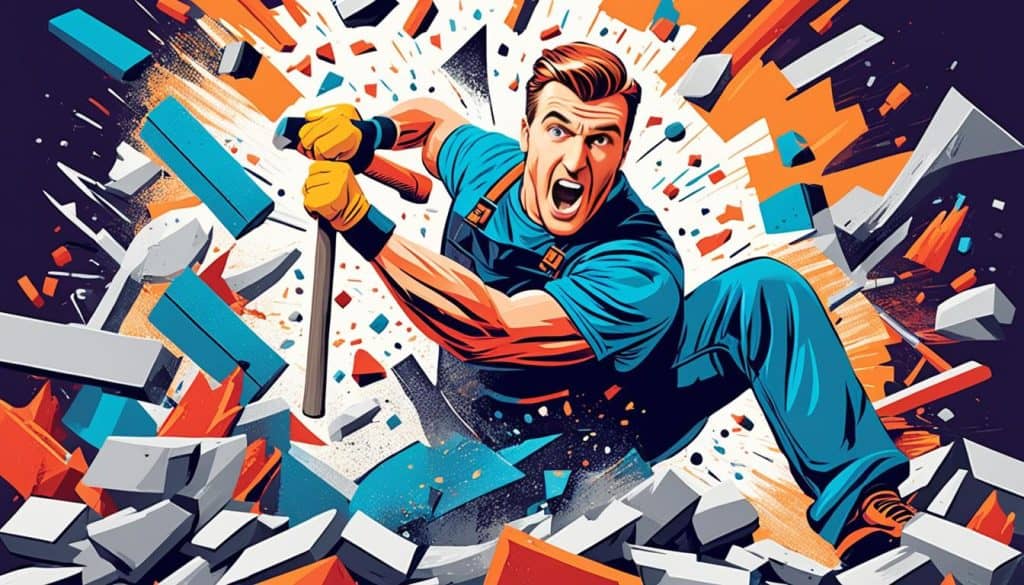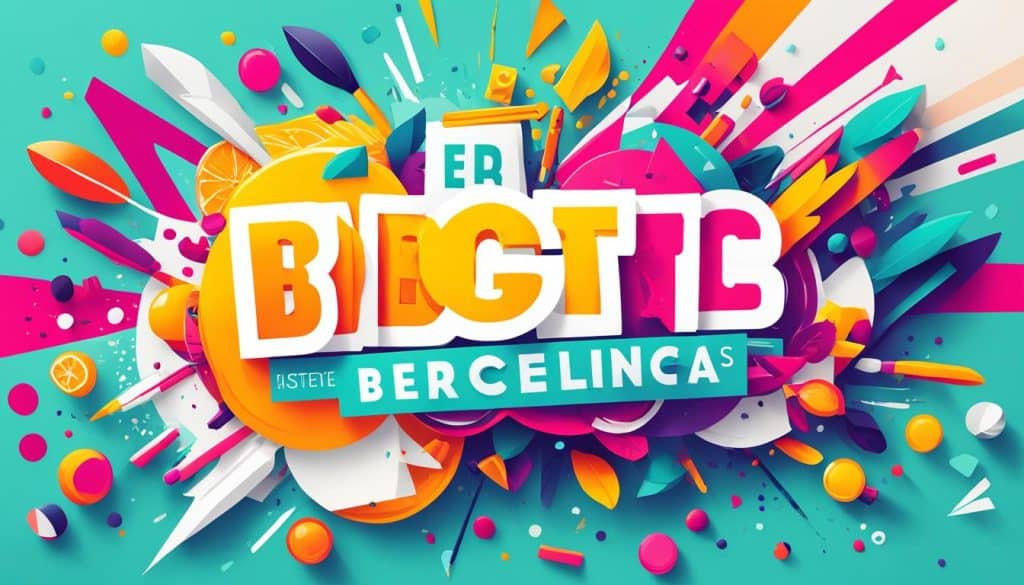Graphic design plays a key role despite many misunderstandings. It carries out numerous tasks and supports different fields. This section’s goal is to clear up what graphic design isn’t about.
Some think graphic design is just about making things look good. But it’s more than that. It helps solve problems and talks with people through its work. Also, you don’t need costly tools to be a graphic designer.
By busting these myths, we show that graphic design is vital for sending messages that click with people. It’s about more than visuals; it’s about making connections in any way possible.
Key Takeaways
- Graphic design is more than just aesthetics; it’s a strategic, communicative discipline.
- The field involves a wide range of roles and responsibilities crucial for effective communication.
- Graphic design is accessible with various tools and does not always require high-end software.
- Not restricted to adhering to trends, graphic design focuses on creating lasting impact.
- Professionals in the field work across different media, breaking the myth that it’s limited to still visuals.
Understanding The Varied Roles of Graphic Designers
Graphic design is a wide field with many areas to work in. Each area needs different skills. Graphic designers help brands look good in different ways.
The Spectrum of Graphic Design Specializations
There’s a lot of different jobs in graphic design. From making brand logos to designing ads, there’s something for everyone. Various designers work on websites, draw, or even create moving pictures.
- Branding specialists
- Packaging designers
- Marketing designers
- User interface designers
- Motion graphic designers
- Illustrators
- Game designers
- Animation designers
Each designer must know a lot about how things look and how people use them. Being good at just one thing is very important in graphic design.
Core Responsibilities of Graphic Design Professionals
Designers have many important jobs, no matter what they specialize in. They must make things look great and work well for their client’s goals.
- Understanding the needs of clients or employers
- Developing innovative ideas and concepts
- Creating detailed illustrations or infographics
- Incorporating branding elements effectively
- Editing and modifying designs
- Preparing files for print or digital publication
- Ensuring adherence to industry standards
Graphic Design Across Different Media Platforms
Design can be for the web, paper, or packages. It needs to fit where it will be seen. Designers make sure their work is perfect for each place.
| Medium | Typical Design Focus |
|---|---|
| Websites | User Interface, Interactive Elements |
| Magazines | Layout, Typography, Imagery |
| Books | Cover Design, Typesetting |
| Advertisements | Visual Impact, Brand Messaging |
| Product Packaging | Branding, Usability, Information Architecture |
Being able to design for any place is key. It ensures the message is seen and remembered, no matter where it appears.
Creating successful design solutions across various platforms requires a versatile skill set and an adaptive approach, making graphic design a continually evolving profession.
Debunking Myths: Common Misconceptions in Graphic Design
In the creative world, many myths surround graphic design. The most common one is thinking it’s only about logos. But, graphic design includes much more, like design for websites and package logos.
Another myth is that it’s all about still pictures. While true, graphic design also works with animations and interactive designs. This shows how diverse and flexible it truly is.
- The necessity of following design trends: Many great designs don’t just follow trends. They are built on timeless and universal principles.
- The perception of graphic design requiring expensive tools and software: Top-tier tools can help but are not essential. You can make great designs with simple, budget-friendly tools.
Some think graphic design is just about making things look nice. But, it’s really about solving problems and sending clear messages. It’s not just about the outer appearance.
Others believe it’s easy and quick to do. But, creating quality designs takes time, planning, and skill. It’s not something that can be rushed, wearing deeper understanding and effort.

Understanding and breaking these myths is crucial. It helps designers, clients, and the public truly see the power and importance of graphic design.
Evaluating The Importance of Graphic Design in Marketing
Graphic design is key in marketing. It’s more than making logos. It helps make brochures, ads, and banners look good. This makes the brand stand out and speak well to the audience.
Graphic Design Beyond Logo Creation
Graphic design in marketing is broad. It uses visuals to show a brand’s soul, connecting with customers. Through cool brochures and ads, designers shape how people see and react to brands.

Dynamic Versus Still Imagery in Graphic Design
Graphic design isn’t just about still pictures. It includes moving graphics and animations too. These can be more fun and tell stories better, great for online ads to catch someone’s eye fast.
Graphic Design Trends vs. Timeless Communication
Keeping up with trends is good, but making timeless designs is better. Good graphic design talks to people across time, no matter what’s popular. Mixing new ideas with classic design helps attract and keep people interested.
This way, graphic design stays important for marketing. It helps with short-term goals and keeps the brand strong in the long run.
Evaluating The Importance of Graphic Design in Marketing
Graphic design is key in marketing, linking companies with customers. It uses visuals to change how people feel and act. This is vital as it helps messages stand out and create a bond with the brand.
We are drawn to what we see. So, graphic design is crafted to make brands communicate well and stand out. It aims to make people remember and like what they see, building brand loyalty. This happens in ads, on social media, and even in packaging, turning the ordinary into eye-catching works.
Using graphic design in marketing makes strategies more effective. Well-made visuals catch attention better than words do. They help businesses quickly say what they need to, turning looks into actions. This blend of looks and function helps each piece shine and achieve its goal. And this supports a company in a busy, competitive field.
FAQ
What are some common misconceptions about graphic design?
What are the core responsibilities of graphic design professionals?
What types of media platforms do graphic designers work with?
How does graphic design contribute to marketing?
What is the difference between dynamic and still imagery in graphic design?
Should graphic designers follow design trends?
Source Links
- https://publicadagency.com/not-true-about-graphic-design/
- https://medium.com/@digitalmarketing-tips/which-of-the-following-is-not-true-about-graphic-design-e768dd2a0010
- https://aristosourcing.com/which-of-the-following-is-not-true-about-graphic-design/
